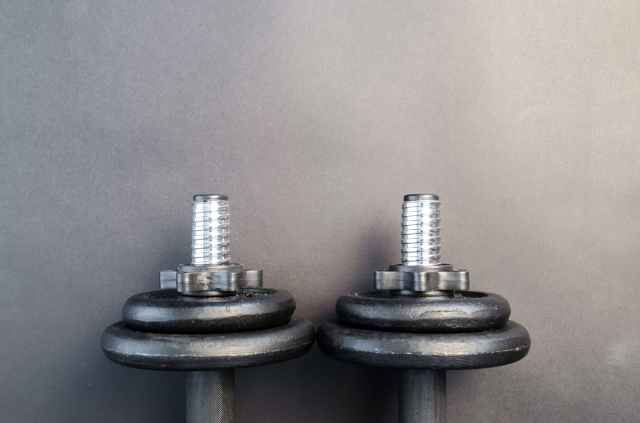In the last blog post, I discussed the reason barbell and free weight training is useful, the history of machines, and the reasons barbells are superior to machines in most circumstances. Here are 8 reasons free weight training is beneficial for most ages and abilities and I am passionate about training my clients using them:
1. Bone Health
Barbells load the skeletal system. In women especially barbell lifts have been proven to

Photo by Pixabay on Pexels.com
improve bone density. Bone is not a dead tissue, it is living, stress responsive tissue just like muscles, ligaments, and tendons. Therefore, just as one seeks to increase muscle mass and function by lifting, one can seek the same benefits for bone health through lifting weights.
Barbell movements require core stability which reinforces postural needs and needs for stabilization. Furthermore, they signal the growth and survival of cells and train the largest amount of tissue at one time.
2. Functional Movement
Barbell movements are functional, meaning, everyone sits, pushes, picks things up and puts them back down. Translating, everyone squats, everyone presses, and everyone deadlifts. Barbell movements lay the foundation and strength for properly performing these movements.
To further explain the relation of lifting to cell growth, Jonathan Sullivan MD, PhD, SSC, explains in his article Barbell Training Is Big Medicine:
…cells decide to die. It’s not a passive process, but rather the culmination of an elaborate biomolecular self-destruct program call apoptosis or programmed cell death…. Up to a point, apoptoseis can be inhibited or reversed, and the most effective way to do so is through growth factor signaling. But growth factors don’t just promote growth – they promote cellular survival….
When we train with a barbell and eat correctly, we are sending a signal to our body that an anabolic environment is called for. An anabolic environment means growth factors. Growth factors suppress apoptosis. And apoptosis is a fundamental part of aging.
3. The Most Effective Medication
If barbell movements were prescribed, at least in addition to prescription medication,

Photo by Pixabay on Pexels.com
we could make some true progress on problems developed with age and in people with disabilities. Lifting is the only prescription where an increase means one is getting better instead of worse – and this is beautiful. While there is no research on whether lifting increases one’s lifespan, research absolutely shows lifting increases functional years.
4. Fight Aging
In my dad’s case, Huntington’s Disease results in a decrease in the ability to perform functional movements. Although his condition has worsened, overall for the last four years, he has made improvements and progressed in his lifts and the longevity with which he maintained basic living skills. Research has been done in the elderly that reinforces this theory, again from Dr. Sullivan:
Research with elderly subjects indicates that resistance training improves overall function and strength, enhances bone density and balance adaptations, and improves the metabolic profiles and glycemic control of patients with type 2 diabetes….
Squats, deadlifts, and presses strengthen functional movements – getting up, walking, standing, bending over, reaching – that we all rely on every day and that can be challenging for deconditioned elderly people. And because, unlike machines, barbell exercises do not isolate joints and their corresponding tendons and ligaments in unnatural loaded movement patterns, we can expect them to be far less likely than machines to damage older, more beat-up joints.
5. Improved Body Composition
The National Academy of Sports Medicine describes strength training as, “Ideal for individuals seeking alterations in body composition.” In fact, the highest rate of body composition changes come from lifting weights. Lifting weights improves one’s metabolism. When a person performs cardio, one burns calories only during that activity. However, when one lifts, that person burns calories even while at rest. This is because the muscle fibers tear during exercise and after the exercise is complete those muscles are using energy (calories) to repair.
The squat, bench, and deadlift are all compound movement, which means they recruit large muscle groups simultaneously. This also converts to more energy being used.
6. Stronger Athletes
This may seem like an obvious point, but often athletes are afraid of heavy lifting and

Photo by Derick Santos on Pexels.com
will stick to machines or dumbbells. But, the stronger an athlete is, the less energy they will waste. Strength increases the athletes ability to generate large amounts of force. Strong athletes will run faster and jump higher. Research has shown that a maximum effort squat is related to performance in vertical jump tests and sprinting speed.
7. Lifting Improves Mental Health
Strength training is undeniabily one of the single greatest confidence builders. The weight can make or break a person and when one realizes they have the ability to overcome that obstacle, empowerment results.
Lifting also creates independence. As strength increases, so does one’s ability to perform daily tasks. This could include a challenge as intricate as a triathlon to as mundane as picking oneself up from a fall. Chronic pain can be absolutely debilitating.
8. Minimal Equipment
Lifting can begin as simply as a few kettlebells, dumbbells and bands. You can workout at home, in a gym, or private training studio. The point is to move.
Because lifting transfers to many areas of life, I have the motto at my studio, “whatever it is… channel it.” Bring the things that have been plaguing you – physically or mentally. And leave it all on the bar.

Photo by Lukas on Pexels.com
